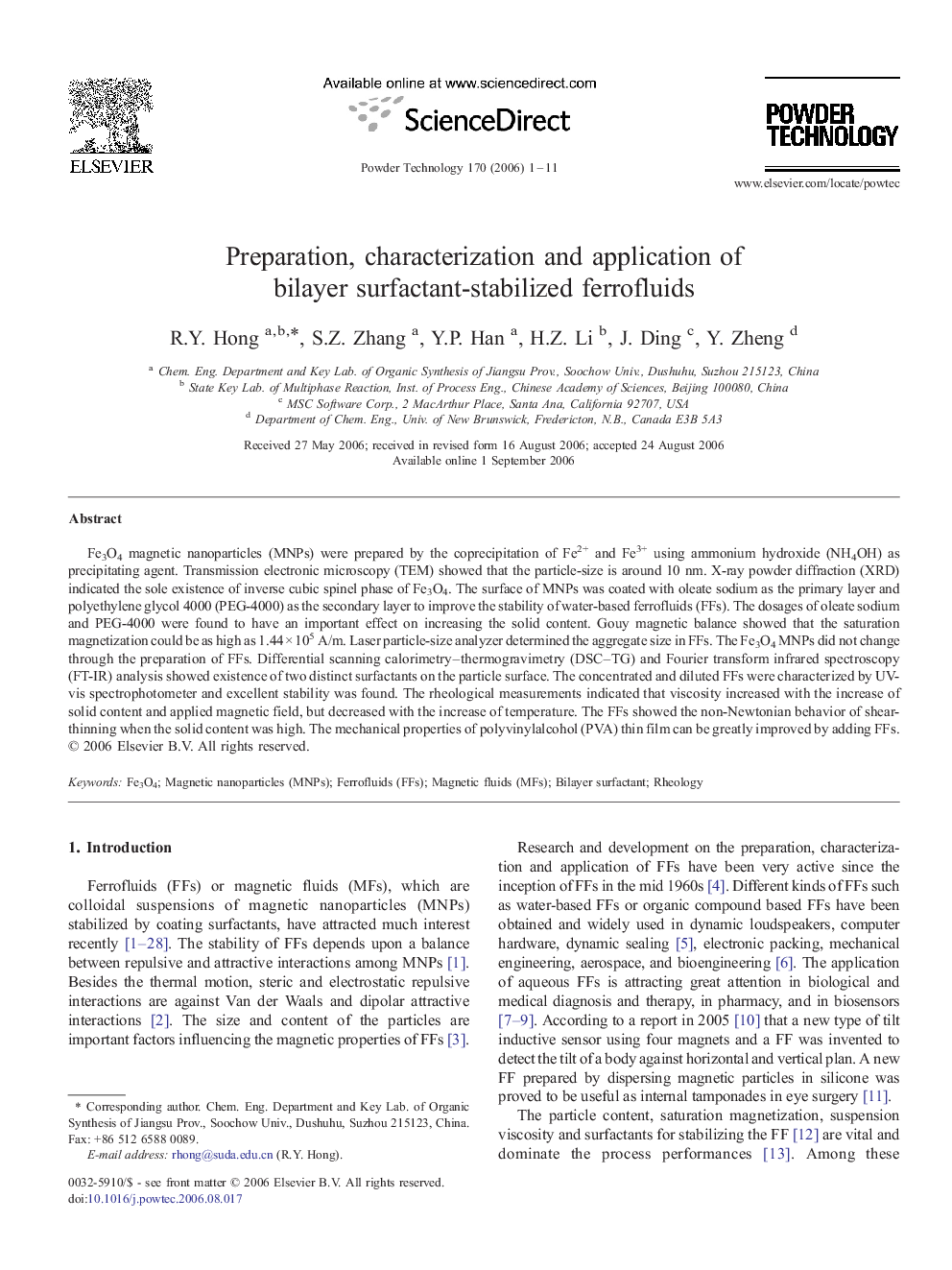| Article ID | Journal | Published Year | Pages | File Type |
|---|---|---|---|---|
| 239358 | Powder Technology | 2006 | 11 Pages |
Fe3O4 magnetic nanoparticles (MNPs) were prepared by the coprecipitation of Fe2+ and Fe3+ using ammonium hydroxide (NH4OH) as precipitating agent. Transmission electronic microscopy (TEM) showed that the particle-size is around 10 nm. X-ray powder diffraction (XRD) indicated the sole existence of inverse cubic spinel phase of Fe3O4. The surface of MNPs was coated with oleate sodium as the primary layer and polyethylene glycol 4000 (PEG-4000) as the secondary layer to improve the stability of water-based ferrofluids (FFs). The dosages of oleate sodium and PEG-4000 were found to have an important effect on increasing the solid content. Gouy magnetic balance showed that the saturation magnetization could be as high as 1.44 × 105 A/m. Laser particle-size analyzer determined the aggregate size in FFs. The Fe3O4 MNPs did not change through the preparation of FFs. Differential scanning calorimetry–thermogravimetry (DSC–TG) and Fourier transform infrared spectroscopy (FT-IR) analysis showed existence of two distinct surfactants on the particle surface. The concentrated and diluted FFs were characterized by UV-vis spectrophotometer and excellent stability was found. The rheological measurements indicated that viscosity increased with the increase of solid content and applied magnetic field, but decreased with the increase of temperature. The FFs showed the non-Newtonian behavior of shear-thinning when the solid content was high. The mechanical properties of polyvinylalcohol (PVA) thin film can be greatly improved by adding FFs.
